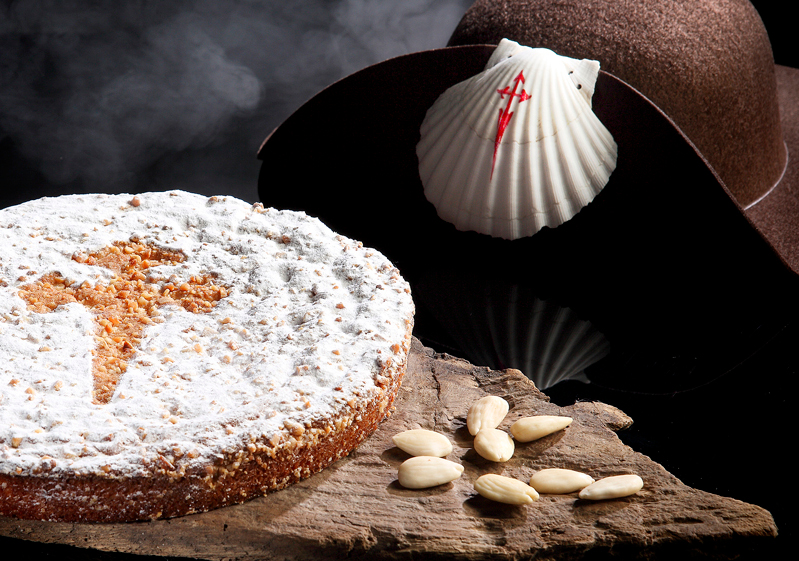Today we celebrate our church’s name day – the feast of Saint James the Elder. It might be useful to start with some of what Wikipedia calls disambiguation, because there are a lot of James’s who are significant to the church. There is, of course, King James the First of England, who gives us the nickname of our most famous Bible translation. He is not our James – our church, like most churches named after saints, is dedicated to a person whose name is found in, and not on the Bible.
But there are three characters named James found in the gospels and the book of Acts. Not to mention Jacob whose story we have been reading in Genesis – James (and Iago and Jacques and Giacomo) are all versions of the name Jacob. There is James, the brother of Jesus, who went on to become the first bishop of Jerusalem, but he is not our man either.
But to make it perfectly confusing, there are also two of Jesus’ disciples named James, and we distinguish them by calling one James the Elder and the other James the Younger, or James the Great and James the Lesser. Our James, the Greater or Elder is also referred to as James the Son of Zebedee, and sometimes, less helpfully, as James the Apostle.
Unlike James the Less, whose name we know, but who is not mentioned in any biblical stories about the disciples, our James is one of Jesus’ favorites, part of a trio of Disciples Jesus seems especially fond of, along with his brother John and Simon Peter, that Jesus chooses to be with him at significant moments in his life like the transfiguration, the healing of Jairus’ daughter, and Jesus’ last hour of meditation and prayer before he is arrested.
James and his brother John were fisherman, like Andrew and Simon Peter, when Jesus called them to leave their father Zebedee to the boats and nets and follow him. Luke’s gospel says that James and John were partners with Simon Peter in their fishing business. John’s gospel yt the way, which is attributed to James’ brother, with some kind of deep modesty, never mentions himself or his brother by name.
Jesus, who seems to be as fond of nicknames as our previous president, calls our James and his brother John Boanerges, meaning “Sons of Thunder,” presumably because of their hotheadedness – it is they who want to use the power of their discipleship to call down destruction from the heavens on the towns that will not listen to their teaching.
And, as we heard in today’s lesson, James and John have a mother with ambitions for her boys. (It should be noted though, that in Mark’s telling of this same story it is the boys and not their mother who ask for the seat of honor). This causes some dissension between them and Jesus’ other followers.
We get one other mention of James in the Acts of the Apostles, where we are told that he is the first of the apostles to be executed for his witness to Jesus’ message of good news, by the Herod currently in power in Jerusalem. (The many Herods also require disambiguation, but we’ll save that for another day).
Legend has it that in the time between Jesus’ death and James’ martyrdom, James traveled widely spreading the Good News, eventually reaching Spain before returning to Jerusalem and death.
Further legend has it that, either by human or angelic intervention, his mortal remains ended up back in Spain, in what became the cathedral church named after him in the town of Santiago de Compostela.
Now in the earliest days of Christianity, churches were simply called by their town or city – the church in Corinth, or Ephesus, or Rome. But when the number of believers grew to the point where there were more than one church in a town, they began to be called by their founders’ names, and eventually by the names of notable martyrs who were from the community or buried in their building.
Eventually, churches started choosing names of famous saints according to their virtues, and begging or stealing some portion of the relics of their patron from the church where they were housed. In modern times we have taken a more practical approach, usually choosing the name of the church based on the day on which the congregation is formed or the building is dedicated.
I suspect, but am not sure that this is how this community, having been prevented from using the older tradition and naming itself after Bishop Pinckney, became the Episcopal Church of St. James the Elder.
But the question I want to pose for you is, not having any relics, what part of the legacy of St. James do we claim for ourselves? St. James is the Patron of Spain, where he is known as Santiago. He is also the patron saint of hatmakers, rheumatoid sufferers and laborers, as well as equestrians, blacksmiths, tanners, veterinarians. He is usually depicted in art with his symbols — the cockleshell, pilgrim hat, sword, and Sacred Scripture – often on horseback, and of the many pilgrims who have walked the Camino Santiago since the middle ages.
In just a minute we are going to be quizzed on the history of our church by members of the Search Committee from the timeline you all helped prepare as part of the search process. As you participate, think whether there is any part of St. James story or legend – whether it be the jumping up to follow a call, being witness to transformational events, an ambition to be as close as possible to Jesus, or movement, by transplanting or pilgrimage to a sacred place – that is also the story of our community. Are we the community of St. James the Elder in more than just name?
After we hear the story of our church as we remember it, we will have a time of silence, marked by the ringing of a bell at the beginning and the end, to reflect on who we are and what we are called to be. Feel free to make your own pilgrimage to the rear of the church during that time, and read the timeline anew.


